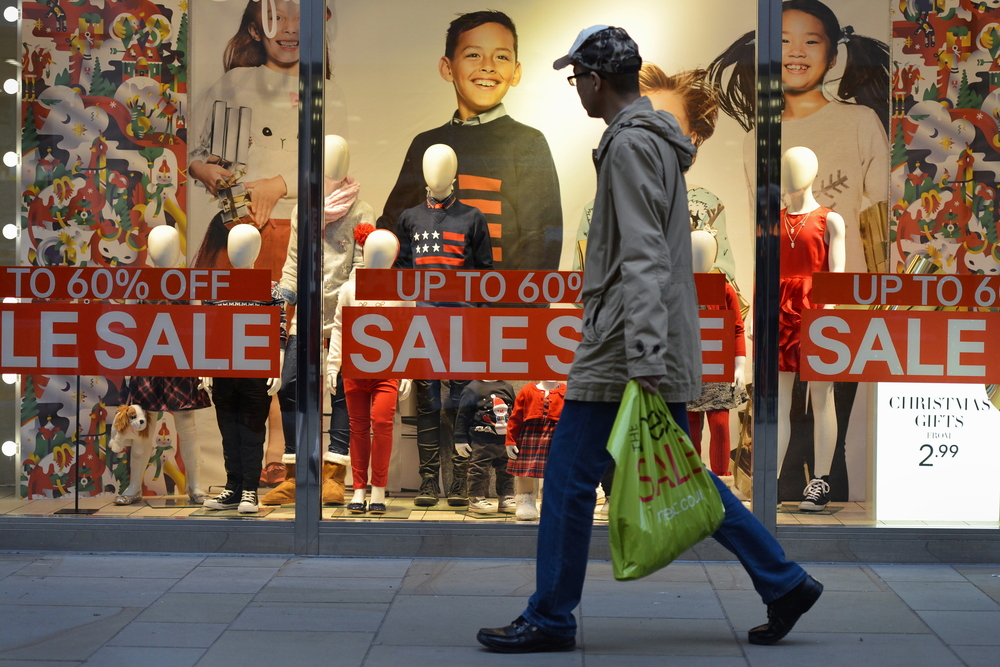Lifestyle
Dashing to the stores: Poll suggests most Canadians haven’t done holiday shopping
TORONTO – With the holiday shopping season heading into the home stretch, data suggests most Canadians will be elbowing their way through crowded stores and malls to make last minute-buys.
An Angus Reid survey done for CIBC found that as of Dec. 15, 69 per cent of respondents still hadn’t finished their holiday shopping, and 15 per cent of those who answered hadn’t even started.
Canadians aged 18 to 34 were the most behind on their shopping, according to the poll, with three-quarters of that age group saying they still had some buying to do. Those who had done some shopping had spent an average of $601; last year’s poll found the average was $678.
The poll poll surveyed 1,519 people Dec.
14-15, and is considered accurate within 2.08 per cent 19 times out of 20.
Historically, Interac data has suggested Canadians typically wait until Dec. 23 to make key purchases, said Teri Murphy, Interac’s senior manager of communications.
Murphy said Canadians made $993 million worth of Interac purchases on Dec. 23, 2014. It also marked the busiest shopping day of the year with the highest number of in-store debit transactions: 19.7 million. More than one-third of money spent was devoted to grocery purchases – likely in preparation for a Christmas Day feast, Murphy said.
As a point of comparison, Interac registered around 16 million point-of-sale transactions totalling nearly $680 million this past Wednesday, Dec. 16.
While some may be putting off holiday buys until the 11th hour, another survey reveals many are still making the time get informed about potential purchases.
One in three Canadian consumers consult in-store and online resources before purchasing a product or service, according to market and consumer information firm GfK.
The company’s online poll of 1,000 respondents found 42 per cent of shoppers say they have checked a product on their mobile device and later went on to purchase the product in-store.
The polling industry’s professional body, the Marketing Research and Intelligence Association, says online surveys cannot be assigned a margin of error as they are not a random sample and therefore are not necessarily representative of the whole population.
“We ask people about what are the top touchpoints that are influencing their store choice and what they buy, and really, previous experience with a retailer or brand is top,” said GfK Canada’s Juliann Ng.
“But then just one level below that, coupons, store flyers, shop info, in-store displays, a lot of the very tactical, traditional touchpoints are very important.”
Promotion and participation in Black Friday and Cyber Monday may be on the rise north of the border, but a report from the NPD Group finds that many Canadians will be still on the hunt for post-Christmas deals.
An online survey of around 1,000 people found that 55 per cent of respondents still planned to shop during Boxing Week, said Sandy Silva, director of fashion and beauty at the NPD Group.
The survey also found 51 per cent of Canadians planned to do some or all of their shopping online – up six percentage points from 2014, Silva added.
Michael LeBlanc, senior vice-president of marketing and digital at the Retail Council of Canada, said the holiday shopping season is panning out as expected, calling it “mostly merry” from the perspective of their members.
LeBlanc said among the key drivers in Canadian consumer sales is the dent seen in cross-border shopping due to the low loonie. The only factor working against retailers in Canada is the weather, which has been unseasonably mild in parts of the country.
“Decades ago when there wasn’t a Black Friday event, retailers would wait for a bit of frost on the leaves or snow on the ground and that would kind of get people thinking about shopping for the holidays. (They) didn’t really have that motivation this year.”
“If you’re a retailer that has commodities that are reliant on weather, you’re probably a little soft on those commodities. Snow shovels, ice removers, snowblowers and ski jackets – those categories are going to be a bit weak.”
LeBlanc said it used to be the case that in-store traffic and the number of people seen toting bags was an indicator of how the day was progressing. That’s more challenging given the increased number of people shopping online and researching purchases ahead of time.
“There’s less browsing and more focused buying because the browsing has been done online before they swing the door on your store.”






















